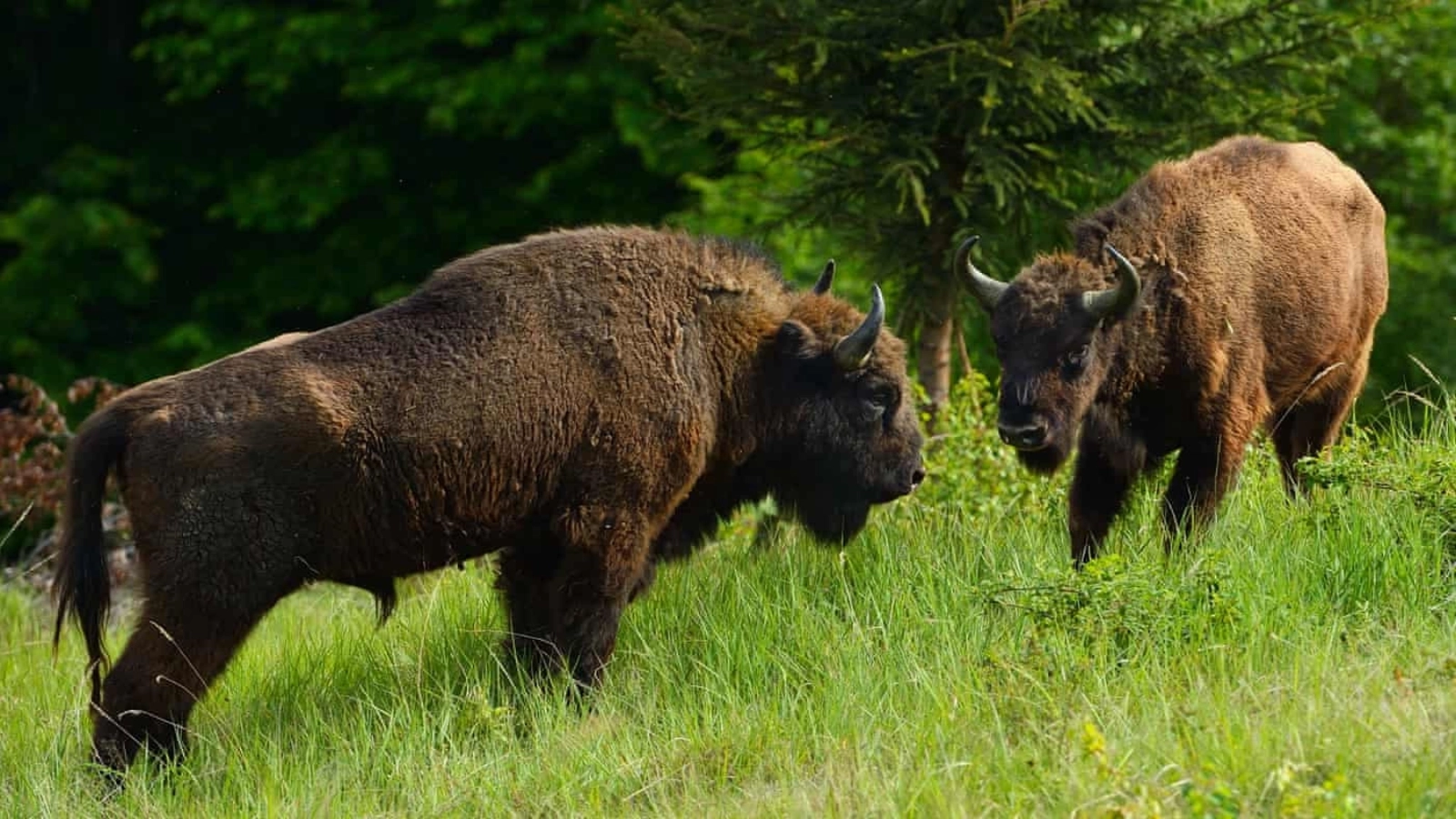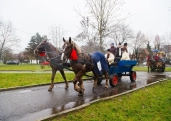The Fagaras Mountains are currently home to 36 bison, which give color to the places that have become home for these animals that dominate the forest landscape. This spring, another 22 specimens will join them, 12 of them located at the reintroduction point in the Dobroneagu area, Nucsoara commune, Arges county.
Currently, in Romania there are approximately 200 specimens in the wild.
The Conservation Carpathia Foundation, through the LIFE programme of the European Commission, started a bison reintroduction programme in the Fagaras Mountains in 2019, managing to release 36 specimens into the wild so far.
The bison repopulation programme of the Fagaras Mountains includes three reintroduction areas. The first point is in the Rucar area, near the Pecineagu lake, and the second in Leresti, in the Voina area. The newest bison reintroduction point is in the Doboneagu area, Nucsoara village, inaugurated in November 2022, where this spring another 12 bison will be released into the wild. Also, five more specimens will be released from Rucar and another five from Leresti.
In Romania, the point at Nucsoara, in Arges, represents the third bison reintroduction project. The first was in Vanatori, in Neamt. It started in 2009 and the first bison was released in 2012. The second one is in Caras-Severin at Arminis. There are currently about 100 bison in the wild.
According to Adrian Aldea, responsible for reintroducing bison within the Conservation Carpathia Foundation project, after the First World War, the total bison population numbered only 12 in captivity, and today, after the decision to restore the species, it has reached over 7,000 of specimens throughout Europe.
He also said that in the specialized books it is stated that the bison can be found up to 1,500 meters altitude, but in the Fagaras Mountains they were seen in the winter at 1,900 meters, but in the summer they do not climb higher than 1,000 meters.
The communication director of the Conservation Carpathia Foundation, Victoria Donos, stated that the presence of bison in the Dobroneagu area is primarily "an element of pride".
"Not everyone in this country has bison in the vicinity of their village, the bison which is a species that has disappeared and has not been seen in these places for over 200 years. For many, it has become, over time, an opportunity to generate incomes, because the presence of these animals can attract some incomes. The presence of the bison can attract a certain type of tourism," said Victoria Donos.
The bison is still not an animal to photograph or pose for selfies, she says.
Considered the largest land mammal in Europe, the bison is a herbivorous animal with a very varied diet, spending up to 80 percent of the day feeding.AGERPRES
































Comentează